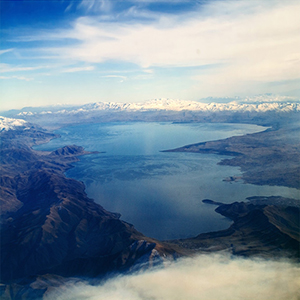Simulating thermal dynamics of the largest lake in the Caucasus region: The mountain Lake Sevan

Submitted: 18 April 2021
Accepted: 29 September 2021
Published: 18 October 2021
Accepted: 29 September 2021
Abstract Views: 3459
PDF: 475
HTML: 39
HTML: 39
Publisher's note
All claims expressed in this article are solely those of the authors and do not necessarily represent those of their affiliated organizations, or those of the publisher, the editors and the reviewers. Any product that may be evaluated in this article or claim that may be made by its manufacturer is not guaranteed or endorsed by the publisher.
All claims expressed in this article are solely those of the authors and do not necessarily represent those of their affiliated organizations, or those of the publisher, the editors and the reviewers. Any product that may be evaluated in this article or claim that may be made by its manufacturer is not guaranteed or endorsed by the publisher.
Similar Articles
- Franco Tassi, Gabriele Bicocchi, Jacopo Cabassi, Francesco Capecchiacci, Orlando Vaselli, Enrico Capezzuoli, Andrea Brogi, Hydrogeochemical processes controlling water and dissolved gas chemistry at the Accesa sinkhole (southern Tuscany, central Italy) , Journal of Limnology: Vol. 73 No. 3 (2014)
- Mehrshad Foroughan, Ulrich Lemmin, David Andrew Barry, Effects of natural surfactants on the spatial variability of surface water temperature under intermittent light winds on Lake Geneva , Journal of Limnology: Vol. 81 (2022)
- Alicja Bonk, Wojciech Tylmann, Benjamin Amann, Dirk Enters, Martin Grosjean, Modern limnology and varve-formation processes in Lake Żabińskie, northeastern Poland: comprehensive process studies as a key to understand the sediment record , Journal of Limnology: Vol. 74 No. 2 (2015)
- Pietro Volta, Norman D. Yan, John M. Gunn, Past, present and future of the fish community of Lake Orta (Italy), one of the world’s largest acidified lakes , Journal of Limnology: Vol. 75 No. s2 (2016): Lake Orta: a new lease on life
- Mircea Alexe, Gheorghe Șerban, Andreea Baricz, Adrian-Ștefan Andrei, Adorján Cristea, Karina P. Battes, Mirela Cîmpean, Laura Momeu, Vasile Muntean, Sebastian A. Porav, Horia L. Banciu, Limnology and plankton diversity of salt lakes from Transylvanian Basin (Romania): A review , Journal of Limnology: Vol. 77 No. 1 (2018)
- Kapillesh Balasubramaniam, Kathleen M. Rühland, Andrew M. Paterson, John P. Smol, Revisiting lakes within the Rideau Canal system (Ontario, Canada) to assess the impacts of multiple environmental stressors over the past ~25 years using diatom-based paleolimnology , Journal of Limnology: Vol. 84 (2025)
- Michela Rogora, Lyudmila Kamburska, Rosario Mosello, Gabriele Tartari, Lake Orta chemical status 25 years after liming: problems solved and emerging critical issues , Journal of Limnology: Vol. 75 No. s2 (2016): Lake Orta: a new lease on life
- Francesca Salmaso, Silvia Quadroni, Gaetano Gentili, Giuseppe Crosa, Thermal regime of a highly regulated Italian river (Ticino River) and implications for aquatic communities , Journal of Limnology: Vol. 76 No. 1 (2017)
- Olga Tammeorg, Tõnu Möls, Külli Kangur, Weather conditions influencing phosphorus concentration in the growing period in the large shallow Lake Peipsi (Estonia/Russia) , Journal of Limnology: Vol. 73 No. 1 (2014)
- Franco Tassi, Jacopo Cabassi, Dmitri Rouwet, Roberto Palozzi, Massimiliano Marcelli, Marco Quartararo, Francesco Capecchiacci, Matteo Nocentini, Orlando Vaselli, Water and dissolved gas geochemistry of the monomictic Paterno sinkhole (central Italy) , Journal of Limnology: Vol. 71 No. 2 (2012)
<< < 1 2 3 4 5 6 7 8 9 10 > >>
You may also start an advanced similarity search for this article.

 https://doi.org/10.4081/jlimnol.2021.2024
https://doi.org/10.4081/jlimnol.2021.2024






